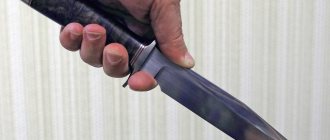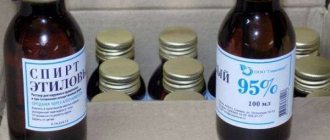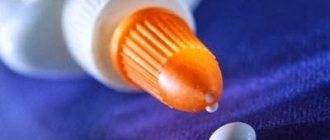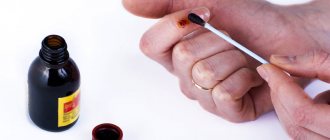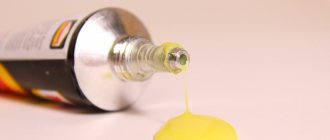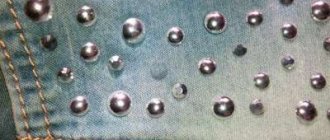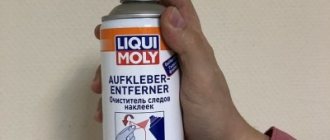How to remove instant glue from skin using an abrasive method
If you don’t have special products or a solvent at hand, abrasive products will help remove the super-moment.
Sandpaper
This is not the best way to clean the skin of your hands, as sandpaper can seriously damage the epidermis. Therefore, you should use it carefully, choosing paper with small abrasive particles.
Pumice
A good way is to clean the skin carefully, avoiding damage. Use on damp skin.
Scrub
If there is very little glue, a regular scrub will help remove it. Abrasive particles can be of any size, but it is better to choose small ones.
Hand skin care
After using one or another cleaning method, do not forget to take care of the skin of your hands. Here are some effective recovery methods:
- Lubricate the skin with a moisturizing or nourishing cream. It’s good if the cream contains vitamins A and E.
- Rub vegetable oil into the skin; flaxseed oil is especially good.
- Moisturize and nourish the skin with a special mask (made from egg whites or lemon juice).
We recommend: How to painlessly remove super glue from nails.
How to quickly remove superglue from your hands using softeners
If superglue is softened, it is easier to wash it off the skin. Such remedies are quite effective, but take time.
Petrolatum
Apply it to wet hands, then wait until the glue softens. After this, rub it with a brush or pumice stone, and the remaining glue is washed off with warm water.
Dimexide
An anti-inflammatory agent that can soften the skin. The glue is affected in a similar way. It is applied to the epidermis and left for 20-30 minutes. Then wash off with soap and water.
How to dissolve super glue with dimexide: instructions, precautions
Dimexide is a medicine that is used for compresses and applications. You can use it to remove super glue.
Instructions:
- Apply a little liquid to a bandage or cloth
- Apply the cloth to the contaminated area and wait 2 minutes
- Rub the area with glue a little, it will begin to peel off
Do not use dimexide under any circumstances if the skin is damaged. It is suitable if the skin is healthy.
How to dissolve super glue with dimexide: instructions, precautions
How to remove glue from skin at home using folk remedies
In order not to harm the skin, various folk remedies are used to remove superglue.
Hot running water
If superglue just gets on your hands, you can remove it with hot water. Simply wash your hands under the tap, using soap if necessary. The high temperature of the water softens the glue, causing it to peel off in layers.
Ice Cube
Ice is an effective remedy for removing glue on the skin. Use a small cube to rub the damaged area. Once the glue cools and becomes brittle, it will come off easily.
Sunflower oil
Soak a cotton swab in the oil and make lotions. As soon as the glue softens, it is cleaned off with a pumice stone or brush.
Coffee grounds
Acts like a regular scrub. Helps clean the epidermis if a small amount of superglue gets in.
Sugar
You can clean your hands of glue using regular sugar. Apply a small amount to damp skin and wipe off the dried glue.
Peanut butter
This is the method of housewives from the USA, which is also effective here. If you have peanut butter at home, apply it to the damaged area and leave for 10-15 minutes. Then washes it off along with the remaining glue. If necessary, use a mechanical cleaning method.
Salt
This is a good skin cleanser. To remove superglue, salt is used as a scrubbing agent. Salt lotions are often given.
Salty lemon
To enhance the effect, add lemon juice to the salt. Salt is poured into the glue and then lemon juice is poured over it. Leave for 5 minutes and then wash off.
Baking soda
Soda is not so capable of damaging the epidermis, so it is often replaced with salt. Thanks to its gentle action, it quickly removes glue from the skin. Used for baths or lotions.
Full fat milk
If it is rustic, then it has a high fat content. This milk is applied to the glued areas of the epidermis to soften it. The advantage is that the skin after the procedure is very moisturized.
Kefir
The effect of kefir is similar to full-fat milk. It’s good if the kefir and sour milk are homemade. Store-bought foods don't have much fat.
Sour cream
It also allows you to quickly and safely soften areas of skin damaged by glue. But sour cream is more difficult to wash off after the procedure.
Vinegar
It is added to warm hand baths. A few drops are enough for 200 ml. Apply lotions to very dry areas. Do not use if there is damage to the epidermis.
Butter, margarine
Butter or margarine quickly softens the glue, causing it to separate. Easily washed off with warm water. Apply, wait 30 minutes and rub.
Lemon
It is rarely used to remove glue without sugar or salt. Usually 1-2 tbsp. l. sugar (salt) is mixed with lemon juice and warm water. Then they take a bath.
Detergent
It is added to warm water and made into hand baths. This method takes time, but allows you to carefully cleanse the skin.
Wiper
This product removes dirt from glass, but it is not very useful for your hands. But if nothing else, a glass cleaner will effectively remove superglue from the epidermis.
Cleaning powder
Cleansing powder is not very beneficial for the epidermis, but it is an excellent substitute for other folk remedies. Use for baths or as a scrub.
Washing powder
Used for warm baths. It removes glue well if you combine a hand bath with mechanical cleaning with a brush or pumice stone.
Lighter fluid
The composition of this liquid quickly dissolves any glue. You just need to spray the can onto the damaged area. But it is explosive, so use it carefully and in a well-ventilated place.
Brake fluid
Quickly dissolves glue. Use it as a regular solvent, applying it to a cloth and wiping the desired area.
river sand
It has a mild exfoliating effect, so it cleanses the epidermis well of impurities. Use by moistening the damaged area in advance.
Nailfile
A small area of the epidermis with glue can be cleaned using a regular nail file. Its action is similar to that of a light scrub.
Hand cream
A regular baby cream will do, the thicker the better. But it may not cope with old stains.
Apply a fairly thick layer to the damaged area of skin and after 30 minutes to an hour, wipe off the glue.
Lotion
The lotion should not contain additional fragrances, otherwise they may react with the glue and damage the epidermis. Apply to cotton wool and apply.
Nail polish remover
It replaces a stronger solvent. It will easily remove glue from your hands, but it will take time and a lot of nail polish remover. Apply to cotton wool, apply and hold for 20-30 minutes. The glue will swell and can be scraped off.
Sugar paste for sugaring
You can use store-bought pasta (but it may contain a lot of unnecessary additives) or homemade one. Natural paste contains only sugar, lemon juice and water. Apply with preheating.
Apply the warm paste to the area with glue; you can cover it with paper on top for easy removal.
Bruise freezing agent
A good alternative to ice. Once frozen, the glue will quickly come off the skin. Just spray, wait, and rinse with warm water.
Methods for removing superglue
Since the use of instant glue often leaves dirt on the skin, craftsmen have come up with a large number of ways to get rid of the glue. Moreover, manufacturers took the initiative and developed a special composition that effectively removes dried pieces of adhesive. As a result, all methods can be divided into two types: special plus household chemicals and folk ones.
Special products and chemicals
In hardware and construction stores you can buy a special solvent for superglue (“anti-glue”)
. They quickly remove traces of glue from any surface; you just need to apply a little product to the stain and leave it for an hour, and then wash off with soapy water. If you remove superglue from your hands, it is better to deviate from the instructions and reduce the time the substance remains on the skin in order to damage the epidermis.
The most popular compositions: German “Anti-glue Super Moment”
from Henkel, the Swiss
“Secunda Antikley”
and the Chinese glue remover
“Strength”
from the Contact company. The compositions are packaged in small 3-5 gram tubes, which cost around 70 rubles.
You can also buy the antiseptic and anti-inflammatory drug Dimexide
, which in practice also removes such contaminants well. It is necessary to wipe the stained skin with a cotton pad soaked in the product. Repeat the procedure until completely cleansed.
Cutting down tips
This is one of the longest and at the same time the most traumatic options for removing false nails. It involves the use of special files with large and medium sections, similar to those used to file extended nails.
The meaning of the procedure is that on each finger the upper surface of the tips is cut off first with a file with a large cross-section, and then with a small one. The procedure is quite lengthy and dangerous, as there is a high risk of damage to the cuticle.
Remains of glue from the nail plate are removed either using a cotton pad and acetone, or simply filed off.
The disadvantage of this particular option for removing manicure with glue is that no matter how carefully the procedure is performed, the upper part of the nail plate itself is still cut off, which ultimately leads to its thinning and deformation.
Chemical composition and safety conditions
The composition of moment distinguishes it from other products by its high strength and quality. If handled carelessly, it gets on clothes, leather products, and the skin of the hands, and sets instantly. The composition includes the following main components: ethyl esters, acetic acid, polychloroprene rubber, phenol-formaldehyde resins, acetone, aliphatic and naphthenic hydrocarbons. This chemical composition ensures the ability to glue any materials.
The product belongs to the class of hazardous in category 3, therefore, before removing Moment glue from the skin, the following conditions must be observed:
- use latex gloves;
- ventilate the room well;
- apply to the surface using a brush or cotton swab;
- keep away from fire, sparks, direct sunlight, high temperatures;
- pregnant women should wear a gauze bandage;
- store in a dry place out of reach of children.
The work area must be cleaned of dirt and the product must be applied in a thin layer to both surfaces.
How to remove acrylic false nails?
Typically, tips are used as the basis for any extension. They are applied to the nail plate, fixed with a special glue, after which acrylic is applied to the base.
After removing the free edge of the nail, you must completely remove the outer layer of the overlay. To do this, you can use a coarse nail file. This is quite difficult to do, since very often the nail file does not cut off the outer layer, but simply slides over it.
What not to do
To minimize injury to the delicate skin of your hands, you must remember the following prohibitions when removing traces of glue:
- If your fingers are stuck together, do not simply separate them by force without using a special tool.
- You should not try to peel off dried glue, as this can cause a deep wound. It is better to soften the contamination with any available means and scrape it off with a blunt object.
- Do not use sharp objects to remove the “Moment”.
- Do not use chemicals to remove glue if there are wounds or scratches on the skin.
- It is prohibited to use toxic drugs in closed, unventilated areas.
- Do not use flammable materials near open flames.
Salt
Salt acts as a kind of scrub, exfoliating the stuck glue. You can use this method if there are no fresh wounds or cuts on your palms. It is advisable for people with sensitive skin to use fine table salt.
Hands should be held under running warm water. Then pour a little salt onto the adhesive film and rub for several minutes. The result should be white foam. After this, the salt must be washed off with running water. If it was not possible to remove the superglue completely, repeat the procedure from the beginning.
What not to do and precautions when working with glue
If the adhesive mixture gets on the epithelium and nails, then it is not allowed:
- Remove the layer with a knife, blade or other sharp objects. In this case, there is a danger of cutting off the epidermis layer.
- Remove dried material. This will lead to the formation of lacerations that take a long time to heal.
- If your fingers are stuck together, do not force them apart. This will cause the skin layer to rupture.
- If the glue just gets on the surface, you can remove it with a napkin or bandage. You should not immediately put your hand under the water, as this promotes even greater hardening.
- Gnawing with teeth. This will harm not only the skin, but also the enamel.
Careful handling of adhesive bases includes:
- carry out work with gloves;
- prepare a place to work, cover your knees and clothes;
- pin up your hair or use a cap;
- use eye protection;
- Keep the product away from children.
